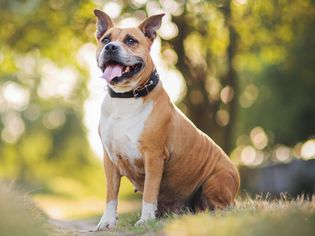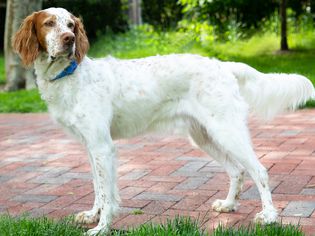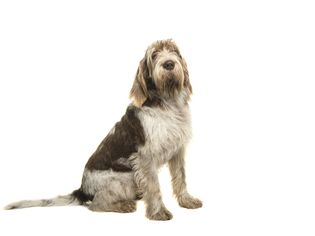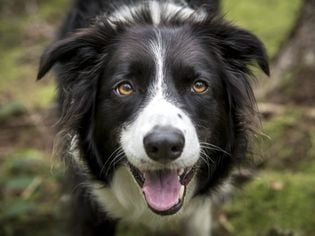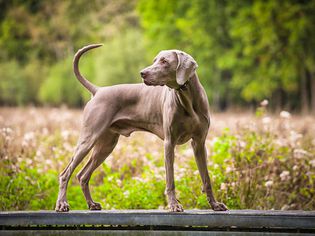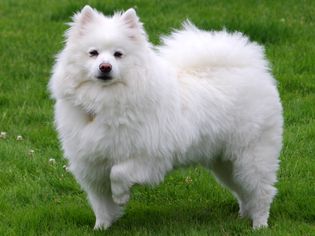The Chesapeake Bay retriever, also known as the Chessie, is a medium-large sporting dog breed with a medium-length waterproof coat and amber eyes. This breed is a skilled swimmer with a keen sense of smell, and was bred to retrieve waterfowl for hunters.
The Chessie is loyal, athletic, and tireless. This dog can also be a bit sensitive and independent, which might not make them ideal for a first-time dog parent.
Learn more about the Chesapeake Bay retriever’s history, temperament, and care needs.
Breed Overview
GROUP: Sporting
HEIGHT: 21 to 24 inches (female), 23 to 26 inches (male)
WEIGHT: 55 to 70 pounds (female), 65 to 80 pounds (male)
COAT: Wiry, wavy, medium-length
COAT COLOR: Shades of brown, deadgrass (yellow to tan), sedge (red), tan
LIFE SPAN: 10 to 13 years
TEMPERAMENT: Active, energetic, loyal
HYPOALLERGENIC: No
ORIGIN: United States
Characteristics of the Chesapeake Bay Retriever
Chesapeake Bay retrievers generally have an affectionate and devoted temperament with their family. But they also have a protective streak to their personality that makes them only moderately open to strangers. In addition, their high energy level makes them very bright and alert dogs.
| Affection Level | High |
| Friendliness | Medium |
| Kid-Friendly | Medium |
| Pet-Friendly | Medium |
| Exercise Needs | High |
| Playfulness | Medium |
| Energy Level | High |
| Trainability | High |
| Intelligence | High |
| Tendency to Bark | Medium |
| Amount of Shedding | Medium |
History of the Chesapeake Bay Retriever
The Chesapeake Bay retriever can trace its roots to, naturally, the Chesapeake Bay area of Maryland and Virginia in the early 1800s. Waterfowl hunters in the region needed an athletic dog who could retrieve their game swimming in frigid waters.
Various breeds, including the Newfoundland, Irish water spaniel, and hounds, went into creating the Chessie. What arose was a dog with a thick, oily coat that repelled water and insulated from the cold. The dog had excellent stamina, a wide chest that could break through ice in the water, strong legs for swimming, and webbed feet.
Several prominent people, including President Teddy Roosevelt and Tom Felton, have owned Chessies over the years. And it’s even the official dog breed of Maryland. The American Kennel Club first recognized the breed in 1878.

Chesapeake Bay Retriever Care
Be prepared to spend lots of time and energy exercising your Chessie. Although these dogs can do well in an urban setting, they love being able to spend time in the great outdoors, swimming and running, so they can be great for pet parents living in rural areas.
Also, with the Chesapeake Bay retriever, it's important to be consistent with training and socialization. Fortunately, this breed only requires basic grooming.
Exercise
Chessies don’t seem to tire, and they prefer to be busy. They have lots of physical and mental energy to burn. Plan to spend ideally at least two hours per day exercising your dog with activities like:
- Brisk walks
- Running
- Hiking
- Swimming
- Fetch
Make sure your dog is mentally stimulated, as this can help prevent destructive behaviors. You can use puzzle feeders and dog sports, such as dock diving, to exercise this breed both physically and mentally.
If your Chesapeake Bay retriever is playing with your children, be there to supervise. Make sure your kids are gentle with your dog and won’t accidentally get hurt by your pet.
Grooming
This is a moderately shedding dog breed with a coat that can handle a variety of conditions. The undercoat is woolly and the top coat is a bit oily and able to repel water. After getting wet, this coat will dry quickly.
Plan to brush your dog weekly to remove loose fur and prevent mats. You might see an increase in shedding a couple times a year, often in the spring and fall, that will require more frequent brushing to keep up with the loose fur.
Bathe your Chessie every couple of months or so, depending on how dirty they get. This breed has a natural musky odor due to their oily coat.
Check the nails roughly every month to see whether they need a trim. And look in the ears at least weekly for wax buildup, debris, and irritation. Make sure to dry the ears well after your dog goes swimming or otherwise gets wet. Finally, aim to brush your dog’s teeth daily.
Training
Training and socialization, ideally from a young age, are essential to have a well-mannered Chessie. This breed is smart and can learn quickly. But this dog also can be independent-minded and stubborn. So, it’s key to be consistent in your training to prevent bad habits from forming. Use only positive training methods for this sensitive breed; harsh corrections can cause them to shut down and not learn.
Aim to expose your dog to different people, other dogs, and various settings from as young of an age as possible. Having positive experiences can help to offset the breed’s protective instinct and make them comfortable and confident around strangers.
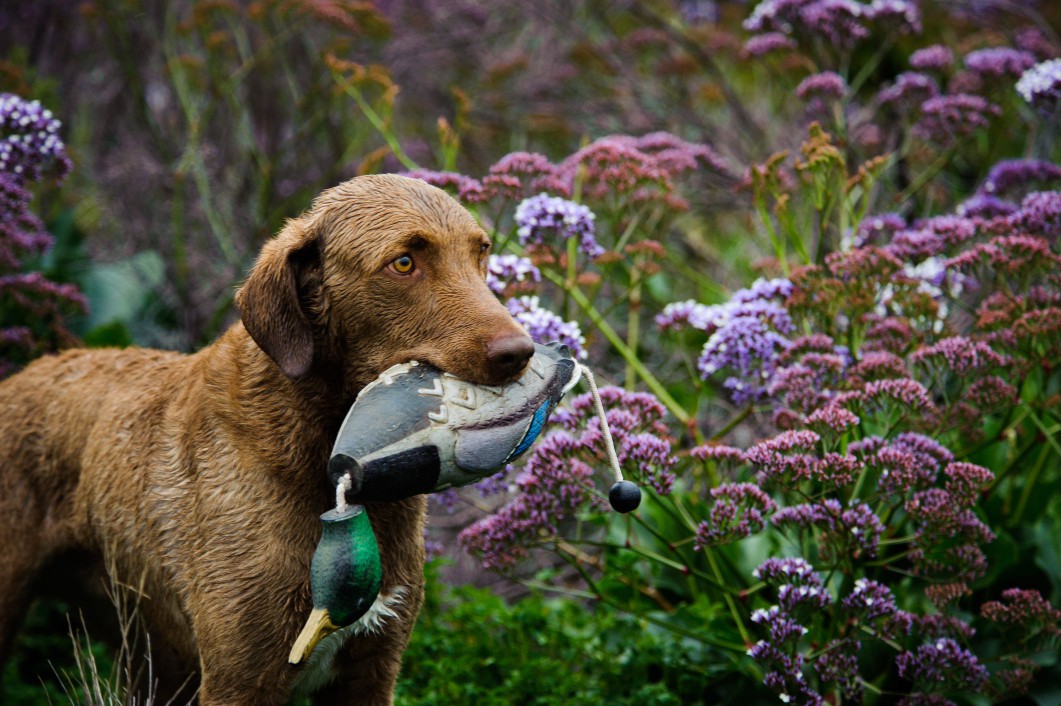
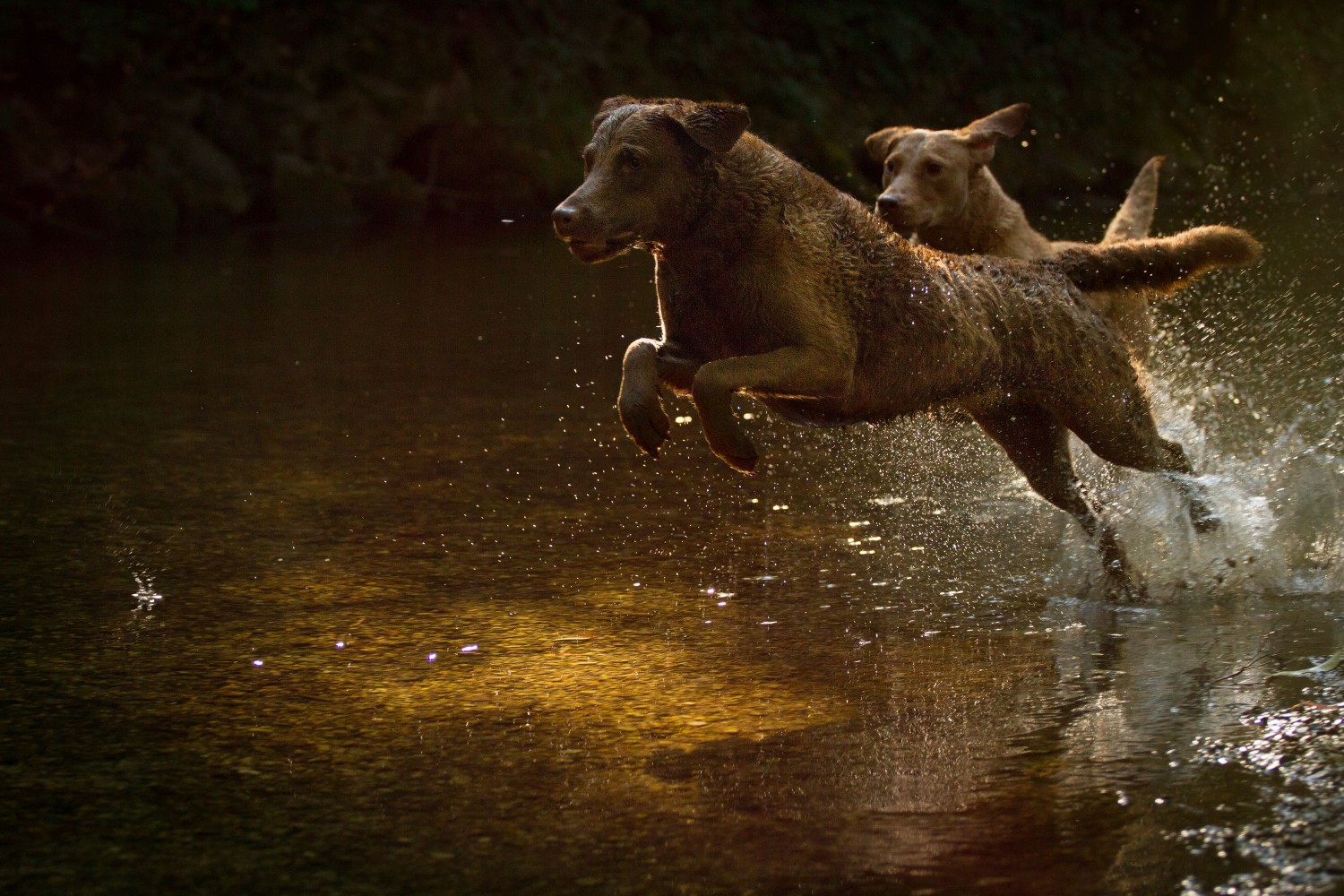
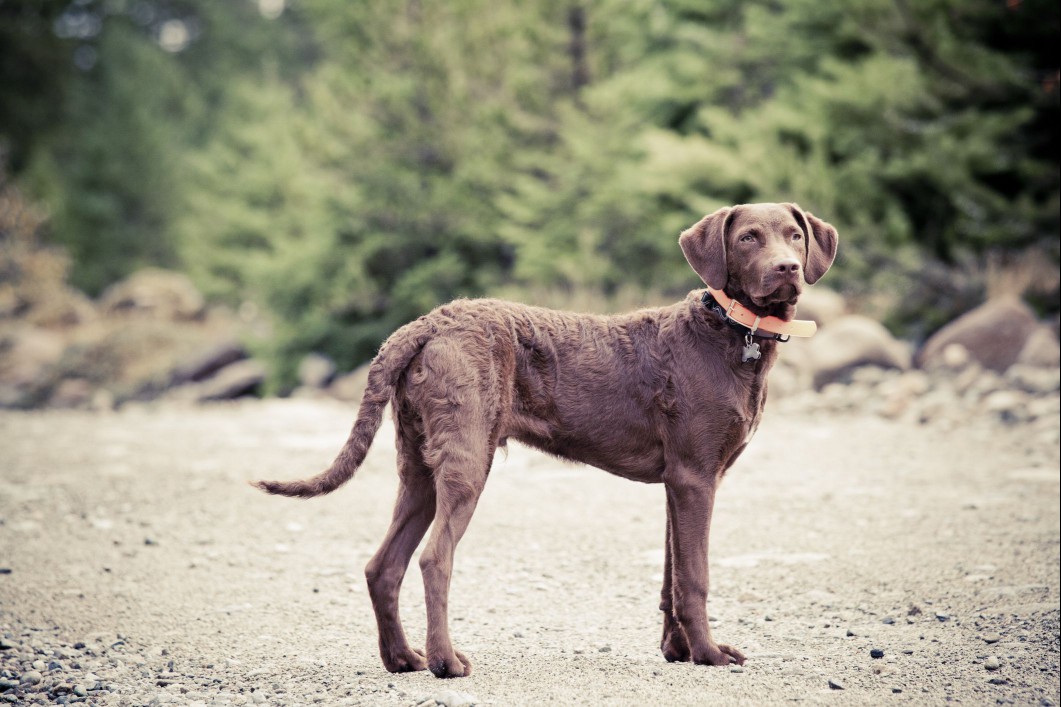
Common Health Problems
Chesapeake Bay retrievers are generally a healthy breed, but they are prone to some hereditary health issues, including:
- Hip dysplasia: This orthopedic problem occurs when the hip joint doesn’t develop properly. Symptoms include hip pain, exercise intolerance, unusual gait, and limping.
- Progressive retinal atrophy: This condition affects the retina of the eye. Over time, a dog with PRA can become blind.
- Ear infections: Infections in the ear can cause symptoms like ear discharge, a head tilt, loss of balance, and odor from the ears. Dogs might also scratch their ears. Consult a vet to get the right treatment.
- Degenerative myelopathy: This condition causes the white matter of the spinal cord to break down. The hind limbs become weak, causing a dog to exhibit symptoms like wobbling and difficulty walking. It can lead to paralysis.
- Exercise-induced collapse: This is an inherited neuromuscular disorder that causes weakness and lack of coordination during exercise. It can cause a dog to collapse after strenuous exercise.
Diet and Nutrition
Always have fresh water available for your dog. And feed a nutritionally balanced, high-quality canine diet.
Most pet parents give their dog up to 2.5 cups of food total daily. Feed two measured meals per day.
Always discuss the type of food and the amount with your vet to make sure you’re meeting your dog’s individual needs. For instance, if your dog leads an active lifestyle, they might have increased protein and calorie needs.
Where to Adopt or Buy a Chesapeake Bay Retriever
If you’re looking to acquire a Chesapeake Bay retriever puppy from a reputable breeder, expect to pay around $900 to $5,000, on average.
While Chesapeake Bay retrievers aren't as common as golden or Labrador retrievers, it’s still worth checking local animal shelters for a dog in need of a home. Also, look for breed-specific rescue organizations in your area.
For further information to connect you with a Chesapeake Bay retriever, check out:
- American Chesapeake Club
- Chesapeake Bay Retriever Relief & Rescue
- Chesapeake Safe Harbor
Chesapeake Bay Retriever Overview
The Chesapeake Bay retriever is a loyal, active breed that is perfect for those who enjoy spending a lot of time outside with their dog. Be sure you can keep up with this dog’s high energy level, and be prepared to provide them with plenty of physical and mental stimulation daily.
Pros of Chesapeake Bay Retrievers
- Good for those with an active lifestyle
- Loyal and affectionate
- Generally responds well to training
Cons of Chesapeake Bay Retrievers
- Can be stubborn
- Not always friendly with strangers
- Needs high amount of exercise and mental stimulation
More Dog Breeds and Further Research
Make sure to do your research first before deciding whether a Chesapeake Bay retriever is right for your lifestyle. Talk to vets, breed parents, reputable breeders, and rescue groups. If possible, visit with some dogs in person.
If you’re interested in similar breeds, check out:
- Labrador Retriever
- Golden Retriever
- Newfoundland
There’s a whole world of potential dog breeds out there. With a little research, you can find the right one to bring home!
- Are Chesapeake Bay retrievers good family dogs?
Chesapeake Bay retrievers have a moderate tolerance for children. They might be too energetic and sensitive for young children, but they can be good for families with older children.
Is a Chesapeake Bay retriever the same as a Labrador retriever?Chesapeake Bay retrievers and Labrador retrievers look similar at first glance, but they are not the same breed. The Chessie has a wavy coat while the Lab's is straight. And Labs tend to be a bit more friendly and playful.
Are Chesapeake Bay retrievers rare?The Chesapeake Bay retriever is a rare breed, so you may have some trouble finding one, whether you want to purchase from a breeder or rescue one from a shelter.


